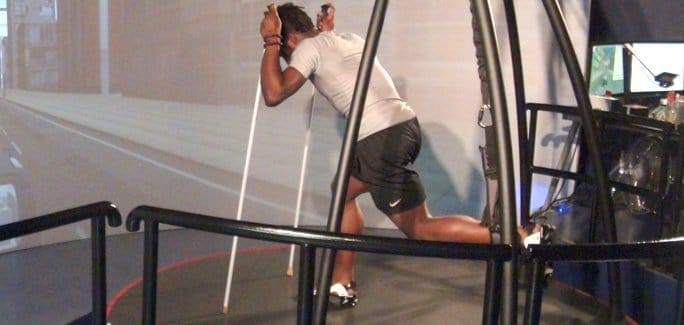You are probably familiar with the core muscles of your trunk and the important role they play in stabilizing your spine and pelvis, and in transferring force loads between your upper and lower body. But did you know that your foot also has core muscles that affect balance, posture and physical performance? Known as your intrinsic foot muscles, or IFMs, your foot core muscles provide stability and facilitate the motion of your medial longitudinal arch (MLA) as it compresses and recoils during walking and running.
Until recently, people with flat or “pronated” feet were often stigmatized, based on the notion that they were more prone to injury. Potential military recruits with flat feet were turned away, and flat-footed athletes and dancers were discouraged from pursuing careers in their respective disciplines. Rigid orthotics and specialized athletic shoes are often prescribed to correct over-pronation, in the interest of reducing injury risk. However, in recent years, study after study has shown those methods to be ineffective, and in some cases, to even increase the risk of injury.
While the extrinsic muscles of the foot are responsible for producing global movement, the intrinsic muscles have small moment arms and small cross-sectional areas designed to provide stability to the MLA as it compresses and recoils. Weakened IFMs reduce the height of the MLA and increase pronation, resulting in less efficient foot function that increases stress on other structures of the foot, including the plantar fascia, the anterior tibial tendon and the Achilles tendon.
With reduced MLA recoil, the extrinsic muscles work harder to produce movement. Weak IFMs also affect balance and posture, which leads to mechanical deficiencies that can affect joints, muscles and nerves along the body’s entire kinetic chain. By strengthening the IFMs, performance is improved and the risk of injury is reduced.
Like any other muscles in your body, your IFMs respond to progressive training loads by becoming bigger and stronger. When considered in that light, it makes sense to train them, rather than restricting them with orthotic inserts and corrective footwear. In fact, your feet are designed to perform best when not restricted by confining footwear.
Two approaches to strengthening the IFMs include:
- “Short foot” exercise: Sometimes called a “short foot maneuver,” this exercise is done on a weight-bearing foot. With your bare foot on the ground, recruit the muscles in your arch to pull the ball of your foot near your big toe toward your heel, lifting your arch upward. To apply progressive resistance over time, begin the exercise while sitting, then advance to standing on two legs, and gradually progress to standing on just one leg. Studies have shown that performing short foot exercises for four consecutive weeks significantly improves muscle strength and balance, and reduces arch collapse and pronation.
- Isolated neuromuscular electrical stimulation (NMES): Using specialized equipment called a NEMS device, electrodes are attached to the skin over the IFMs, and the device transmits an electrical impulse that mimics the action of the central nervous system, causing the muscles to contract. NMES is used to manage pain, prevent muscle atrophy, strengthen muscles, improve range of motion, and reduce muscle spasms.
In addition to helping avoid and prevent injuries, strengthening the IFMs can benefit athletes recovering from lower limb injuries whose foot core muscles have detrained during the healing process.
The sports medicine team at NYDNRehab takes a holistic approach to rehabilitating and strengthening your foot core. In addition to NEMS, we use other advanced technologies like infrared camera force plate technology, C.A.R.E.N (Computer Assisted Rehabilitation Environment) and other cutting-edge approaches to treatment. If you have been told you have flat feet or that you are an “over-pronator,” contact NYDNRehab today and see how foot core strengthening can improve your performance and reduce your risk of injury.























































